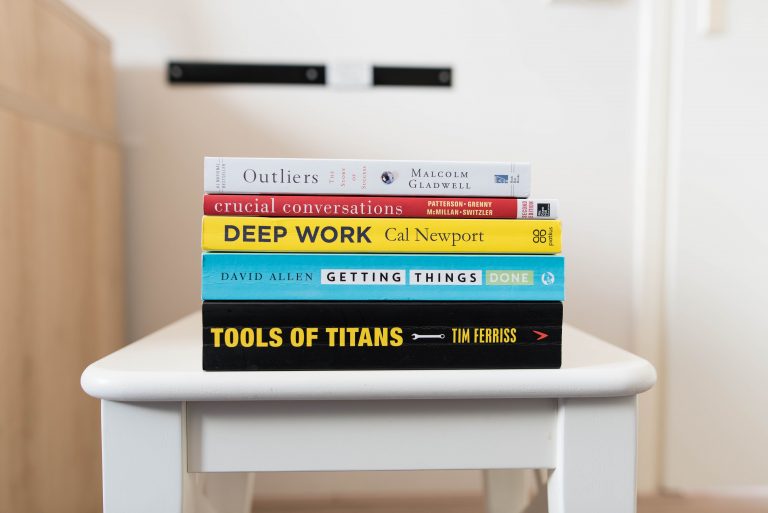Multitasking is human nature. We’ve all listened to music while driving to work or while cooking. We’re all likely guilty of browsing through our phones while chatting with a friend. But what about when it comes to multitasking at work?
With so many demands on our time, you’re probably familiar with the idea of multitasking while working – handling more than one task at once. For some of us, it makes us feel like we’re extremely competent in our roles; taking on more and more tasks, in theory, makes you look highly productive to senior management.
The reality is very different. The idea that you can be more productive by multitasking is a myth. When you multitask, you aren’t completing more than one task simultaneously. In reality, you’re more likely to be jumping between tasks, reducing your ability to focus on and complete each of them individually.
Science Shows that Multitasking Harms Productivity
Scientific studies into multitasking over the past several decades have taught us a great deal about the limitations of the human brain. If you’re a multitasker, these scientific discoveries should give you serious cause to rethink your approach to work.
Multitasking is harder than you think
One of the most pertinent discoveries is that most of us will actually perceive our multitasking ability to be better than it actually is in reality.
One research study found that multitasking ability positively correlated with a person’s perceived ability to multitask, and it was found to be “significantly inflated” compared to what’s possible.
The brain actually lacks the necessary neural and cognitive pathways to competently work on two or more activities at the same time. While we’ve evolved to excel at mental tasks, this is when focusing on a single task at any given time.
You can see this in an action as simple as strumming your fingers. Try tapping out a tune on one hand, while tapping out a different tune on the other. For the vast majority of people, it’s an impossible task.
Multitasking increases distractions
The behaviors noted above were most common in people who struggle to block out distractions, particularly in people who work in junior roles in an organization. Actually, multitasking itself is a distraction, as a second or third task distracts you from the first. We’ve already established that the brain cannot handle more than one task simultaneously.
This phenomenon is also supported by research. One study found that brain activity in the right prefrontal region was increased during multitasking, but that increased brain activity in this area was associated with worse performance in a given task.
Multitasking leads to decreased productivity
So, is multitasking productive at least? It’s ironic that many people consider multitasking to be a productive behavior, as it in fact leads to slower output. Psychologists have created a term for this phenomenon, which they call “task switch costs.” These are the negative effects seen when a person tries to handle more than one task concurrently.
There’s another phenomenon that comes into play here, which is often referred to as “automaticity.” That is our ability to “autopilot” through particular tasks that are repetitive and that we have mastered. An example of this could be when you drive from A to B without remembering how you got there.
The problem with multitasking is that it impedes automaticity. Those routine tasks that you often repeat when completing work are suddenly far more involved and require a great deal of manual effort.
Multitasking affects your executive functions
Executive functions are processes within the brain that manage our prioritization of tasks. They determine when how and when we’ll complete a task, as well as when we should decide to prioritize one goal over another.
When we multitask, we activate these pathways far more often. While it may not be a particularly time-consuming thought process, it can slow you down when you’re continually switching between tasks.
This is why, for example, using a mobile phone while driving is illegal. Even if you’re only stealing glances at your screen, your thought processes and reaction times are slowed down sufficiently to cause a serious accident.
Multitasking leads to increased error
Research supports the idea that multitasking increases the likelihood of making mistakes in your work. One study has linked worse academic performance with multitasking. So, the same naturally applies to employees who attempt to complete more than one complex task simultaneously.
Replace Multitasking With Time Blocking
Time blocking can improve your productivity in a far more effective way than multitasking, which we’ve already established as counterproductive. In essence, you’ll be breaking down your day into “blocks” of time that will be designated to specific tasks.
For example, between 09:00 and 10:00, you’ll focus exclusively on clearing your email inbox and replying to contacts. Between 10:10 and 11:10, you’ll move on to generating sales reports for senior management, and so on.
Here are some tips on how to get the most out of time blocking in organizing your day – or your entire week.
1. Use task batching
Task batching means grouping together similar tasks that can be completed closely together. For example, analyzing sales data and generating reports, or completing 1-2-1 assessments of your staff and writing up those reports. Grouping these tasks together reduces context switching, which can help you remain more productive.
2. Understand your chronotype
People typically fall into one of several chronotypes, which are the times of day at which you are most alert, most productive, or sleeping, for example. Understanding your own chronotype will help you to understand when you should plan more complex tasks.
So, if you’re a person who works best in the later hours of the day but struggles to spin up in the morning, you should avoid scheduling brain-intensive tasks first thing in the morning. If you’re somebody who’s full of energy from the moment you wake up, but you struggle with motivation in the afternoon, schedule your meetings and bigger tasks between 09:00 and lunch.
3. Give yourself buffer time
When you’re organizing your schedule, account for buffer time on either side of your tasks. You’ll need time to prepare for your next activity, or to write up notes from a meeting. If you schedule your tasks back to back, you’re more likely to fall behind and give up on time blocking. You shouldn’t – the best time blocking apps can save you multiple hours each day.
4. Be sure to account for breaks
When you’re organizing your day or week, you should make sure that you account for downtime. If you schedule tasks throughout your day without leaving room for coffee or lunch, you’ll burn out more quickly. If you schedule tasks during a break that you fail to complete, it can leave you feeling like you’re missing your goals, which can harm productivity and motivation.
5. Make sure your time blocks are visible
Time blocking isn’t going to work if your colleagues are continually scheduling meetings at a time when you’ve planned to work on something else. That’s why your work calendar is a useful tool for familiarizing yourself with this technique. By blocking out time throughout your workday, colleagues will be able to see when you’re unavailable.
Akiflow Could Save You 2 Hours Each Day
Time blocking can be done with a calendar, such as Outlook or Google Calendar, but you’ll see greater benefits when you use a tool that combines a calendar with task management tools.
Akiflow can automatically import all of your existing tasks and calendar items from other tools, allowing you to organize your daily schedule in a digital planner that offers other benefits:
- Import tasks from a vast range of existing business apps, including Asana, Gmail, Slack, Notion, ClickUp, and hundreds more.
- Create new tasks or calendar events in a flash using keyboard shortcuts and a universal smart command bar.
- Set up new tasks by dragging and dropping emails directly into your digital planner.
- Get notified whenever an important event is coming up, and dive into a call with a single click.
Why continue multitasking when science has highlighted that it just doesn’t work? Switch to time blocking and enhance your productivity starting today.

How To Stop Procrastinating Using Time Blocking
There’s a deadline looming, and you’re working your fingers to the bone to get it done in time. You’ve had weeks to work on it, but you didn’t start until the deadline was nearly on top of you. And now, you’re stressed, panicking about delivering your work late or incomplete, and likely to deliver a […]

9 Strategies To Avoid Procrastination In The Workplace
Have you ever experienced situations where you feel overwhelmed due to large projects? Or do you feel like it’s better to do the tasks after some time? This is what procrastination feels like. In simple words, procrastination is the act of delaying the tasks of one’s own will and completing other unimportant tasks in the […]

Time Blocking: Cal Newport’s Deep Work Explained
Have you ever felt like you work too much but never get enough done? Or that the things you do get done are not as impactful as what you did not tackle? Such feeling is a direct consequence of replacing deep work with easy, low-impact tasks. In his book Deep Work: Rules For Focused Success […]

